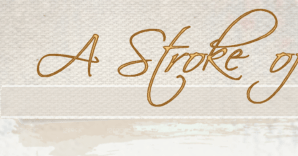Quote:
Originally Posted by Mike McCarty

Maybe if you could tell me what kind of camera and light set-up you are using I might be able to investigate further.
|
I use an old Fuji S-9000, which I believe is still good enough even for photographing my clients. The light setup is the same I use for painting: Two CFL bulbs combined, one cool (45W, 6400K) and one warm (34W, 2700K). But I don't think the light temperature would be an issue since I could use the camera WB or correct the picture later with a software.
Quote:
|
Even if you are right you can't arbitrarily stick your arm into every photo you take. That might be a bit more distracting than the conditions you are complaining about.
|
Yes, that's a problem because if I stick my arm out of the painting I would lose valuable pixels when cropping, as you mentioned before. Besides, it seems to me that the effect of "fooling" the camera is much more visible if I put my arm in front of the canvas and close to the flesh tone in the painting for a comparison.
I reckon this discussion is very complex. Probably (and most likely) the problem annoys me more than others because of my technique (indirect painting, many transparent layers, etc.). The layers cause an illusion to the human eye, which is what we artists aim for, but the cold-hard camera lens seems to get away with some of those illusions.
The camera indeed sees much more than us. If you take a remote control, press a button and look at that small light bulb in front of it you won't see anything. But if you take some shots with your camera it will show a flashing light. Going back to Astrophotography, it's very easy to photograph the famous Horsehead Nebula in Orion's belt. It is a large object and you will not need too much of a magnification to do that. Here's an example:
http://www.starrywonders.com/horseheadcomposite.jpg
In this one you see all the 3 main stars of the Orion's belt, so you can imagine how big the Horsehead Neby is:
http://epod.typepad.com/.a/6a0105371...792b970c-700wi
I have a nice 10" telescope with a fair set of eyepieces. Still I can point it to the exact place and can't see anything. The hydrogen clouds are shown in red on the photos, but our eyes can't spot them. The same goes for other frequencies of light. Can't that rule apply to a painting full of transparent layers? Why do I look at may canvas and see a nice 3D figure, really close to the real thing but the camera shows me a different result? Not very different, OK, but still makes it look worse. That bothers me.
Quote:
|
Perfection is elusive and rare, my southern himispherical brother.
|
Agree, but it would be nice to try and get close. Problem is the bar is always being raised.

